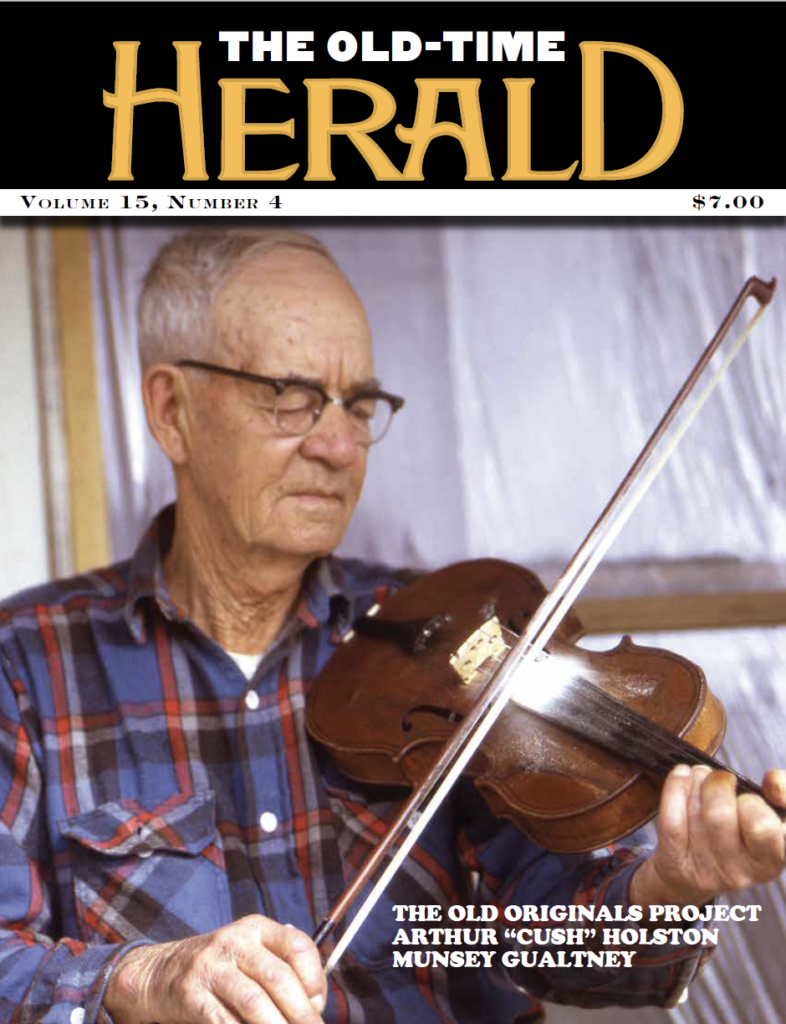Sam Shepard, playwright and actor and musician, either did or did not in sit in on drums with the Red Clay Ramblers. (Historian differ, as Alan Jabbour might have said.) That’s the kind of story that would have been the set piece in another sort of biography of Tommy Thompson. But Lewis Stern’s carefully researched, thoroughly annotated, intensely informative book is a study of Thompson’s intellect and temperament, and after the account of Thompson’s early life in the first chapters, there is very little in the way of sustained biographical narrative, celebrity cameos, or gossip. Stern is after something more vital than the facts of the matter; the task he gives himself is to take the measure of a gifted, mercurial artist who was interested, it seems, in everything but boundaries. A banjo player and a singer, of course, and also a writer of songs and scripts and an unfinished dissertation in philosophy, an adjunct professor, a student of folklore and collector of tunes, a Falstaff (a role, in theatre and in life, that friends thought suited him), the attentive and inventive player-manager of a band, one that went beyond the niche audiences for old-time and bluegrass, and maestro of his own multitudinous artistic impulses, Thompson was a lesson in what could be done with authenticity when it was a starting point rather than an end.
After a college career that veered from football at Florida State to philosophy at Oberlin, and time in the Coast Guard in New Orleans, where he picked up a banjo and Pete Seeger’s instruction book, Thompson moved to North Carolina for graduate work in philosophy and became part of the group of young old-time musicians (along with his then-wife, Bobbie) whose practice was informed by Alan Jabbour’s meticulous study of the repertoire and style of Virginia fiddler Henry Reed. Jabbour’s commitment to learning and transmitting Reed’s tunes just as Reed played them was one kind of authenticity pursued at the music parties at Tommy and Bobbie’s house and, more formally, in the rehearsals and recordings of the Hollow Rock String Band and, a little later, the Fuzzy Mountain String Band (Bobbie Thompson was a member until her death in an auto accident), groups that became touchstones of style and repertoire for the revivalists.
Stern’s book (like the website Early Blurs, www.earlyblurs.com, dedicated to the Ramblers’ Bill Hicks, a history of the band and what came before) provides an affectionate account of a congenial, lively, and devoted community, but even here, with the satisfactions of his steady mastery of old-time banjo and his collecting activity among traditional musicians, Thompson had other, often contradictory things in mind. He wrote and performed the ironically titled one-character play, The Last Song of John Proffit, an examination of the troubled history of the world out of which the old songs had come and the distortions that resulted when music met racism met commerce in minstrelsy. Stern describes how Thompson rewrote and restaged the play over ten years, a long-term reconsideration, driven by the possibility that the recapture and representation of a culture by those not born to it, however well intended, might be as flawed in conception as his fictionalized minstrel’s performances: “Tommy told an interviewer in February 1981,” Stern writes, “that what he did in his own work with source musicians—elderly white Appalachian fiddlers and banjo players, and aging African-American musicians in the Piedmont region that he had sought out either by himself or in the company of musical colleagues and academics—was ‘very wrong’ and that by the early 1990s he had stopped doing that sort of work.”
That’s another kind of authenticity, the thoughtful refusal to simplify or sentimentalize our relationship with the past, and it requires a combination of historical knowledge and self-understanding, as well as the wide-ranging analytical and critical faculties of mind that Stern admires in his discussion of Thompson’s graduate work in philosophy, which concentrated, according to fiddler and fellow philosophy student Bill Hicks, on the question of how psychological traits might influence perception. Thompson was, a friend noted, fundamentally an entertainer, that is, a performer who understood that his link with his audience was shaped not just by the sincerity of his presentation and the accuracy of his material, but by the emotional connection his presence created and the ways in which this informed the perception of his work. Popular old-time revival groups like the Highwoods String Band knew that stage patter and high spirits were as much a part of the tradition as they were an effective way of drawing a crowd’s interest. The Red Clay Ramblers extended both the old-time musical palette—drawing from blues and jazz as well including original songs; adding horns and piano and percussion to their arrangements—and, in their theatrical projects, the role of a band, as they collaborated on the production of Diamond Studs, which had successful runs in New York City and in regional theatres and, later, worked with Sam Shepard on A Lie of the Mind. As much as this may have been the result of timing and luck (the story of their first involvement with Shepard is full enough of improbable synchronicities to have acquired several variant tellings), it would have been even more unlikely without the restless mind of Tommy Thompson or the discipline of his artistic convictions.
There isn’t a page without a payoff in Stern’s book, and this includes the not-to-be-missed footnotes, which are full of anecdotes about the string band revival, excerpts from interviews that didn’t find their way into the main text, and further details about Thompson’s banjos, studies, and projects. The section of brief biographies of those who contributed to the research is a roster of musicians from the scene Thompson loved so well that to honor it, he transformed it. Which is only another way of saying that his life, as Stern presents it, was a constant education in seeking out the authentic and seeing where it might take him next.


Leave a Reply